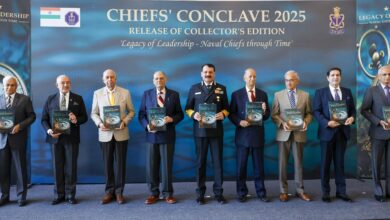ISRO's Historic 100th Mission Faces Technical Glitch After GSLV-F15 Launch

Sriharikota, Andhra Pradesh, February 2, 2025 – The Indian Space Research Organisation (ISRO) achieved a significant milestone on Wednesday morning as it successfully launched the GSLV-F15 rocket carrying the NVS-02 satellite from Sriharikota, Andhra Pradesh, at 6:23 AM. However, the historic 100th mission encountered an unexpected technical glitch, raising concerns about the satellite’s functionality.
Mission Overview: NVS-02 and Its Purpose
The GSLV-F15 mission was crucial for India’s navigation and communication sector. The NVS-02 satellite, part of the NavIC constellation, was designed to enhance global positioning services, military applications, and disaster management systems. The Geosynchronous Satellite Launch Vehicle (GSLV) is one of ISRO’s most advanced rockets, known for its ability to carry heavy payloads into higher orbits.
Objectives of the Mission:
✔️ Strengthening India’s indigenous navigation system (NavIC)
✔️ Supporting defense and strategic applications
✔️ Enhancing disaster management & emergency response
✔️ Providing accurate geolocation services for civilian and commercial use
Technical Glitch Identified
While the liftoff from Sriharikota was flawless, ISRO scientists detected an anomaly in the satellite’s post-launch stabilization phase. Sources suggest that NVS-02 may not have reached its intended orbit, leading to communication issues. Engineers are now analyzing telemetry data to identify the root cause.
ISRO’s Response: A Team Effort to Resolve the Issue
Despite the setback, ISRO remains optimistic. Chairman S. Somanath addressed the media, stating:
🗣️ “We are closely monitoring the situation. The GSLV-F15 rocket performed well, but we observed an issue with NVS-02. Our teams are working on possible corrective measures.”
ISRO’s history of overcoming challenges gives hope that this issue can be rectified. Experts are exploring remote corrective measures before considering a potential follow-up mission.
Historical Significance: ISRO’s 100th Launch
This mission was supposed to be a grand celebration of ISRO’s 100th successful launch, showcasing India’s space dominance. Over the years, ISRO has made remarkable progress with missions like:
🚀 Chandrayaan & Mangalyaan, exploring the Moon and Mars
🚀 PSLV-C37, which launched 104 satellites in one go
🚀 Gaganyaan, India’s upcoming human spaceflight program
Despite the recent glitch, ISRO’s legacy remains intact, with its consistent contributions to global space research and satellite technology.
Global Reactions & Public Sentiment
As news of the technical issue spread, several experts and space enthusiasts expressed their support for ISRO.
📌 Dr. K. Sivan (Former ISRO Chief): “Challenges are part of space exploration. ISRO’s expertise will ensure a solution.”
📌 NASA Scientist, Dr. John Lewis: “Technical issues happen in every space agency. ISRO’s resilience is commendable.”
📌 Public Reactions: While some expressed disappointment, most showed confidence in ISRO’s ability to overcome setbacks.
Trending hashtags include:
🔹 #ISRO100thMission
🔹 #GSLVF15
🔹 #NVS02Glitch
🔹 #ProudOfISRO
What’s Next for ISRO?
🚀 Analysis & Rectification: Scientists will attempt to fix the issue remotely.
🚀 Next Launch Preparations: Upcoming missions, including Chandrayaan-4 and Gaganyaan, remain on schedule.
🚀 Lessons for Future Missions: ISRO will enhance fault detection systems to prevent similar issues.
Final Thoughts: A Setback, Not a Failure
While ISRO’s 100th mission has hit a hurdle, history shows that setbacks fuel innovation. With ISRO’s proven track record, it’s only a matter of time before a solution is found. The world watches as India’s premier space agency once again demonstrates its resilience and expertise.






